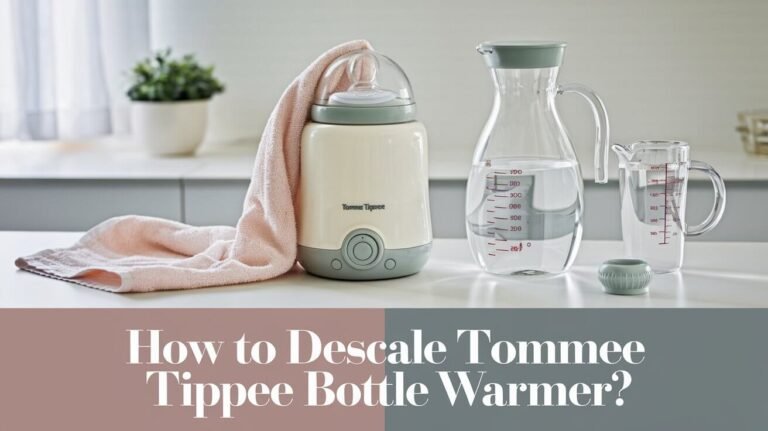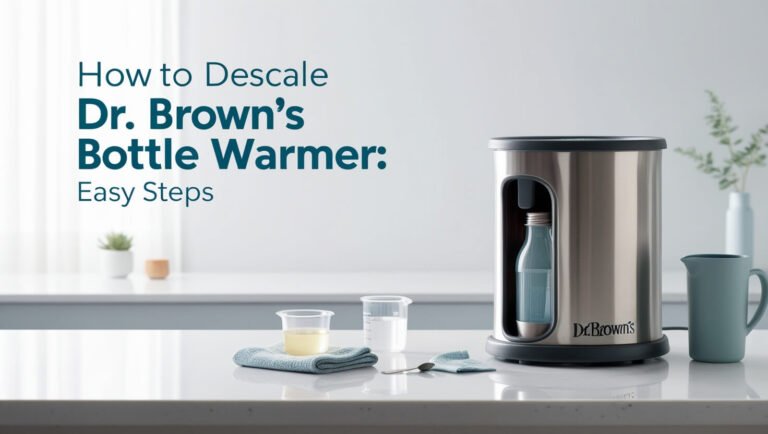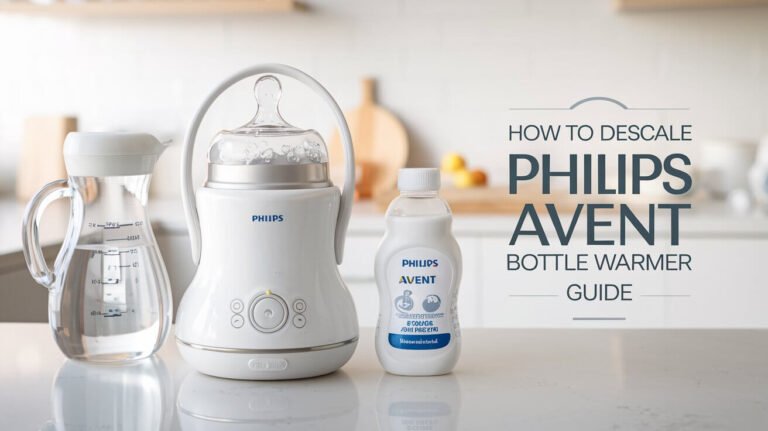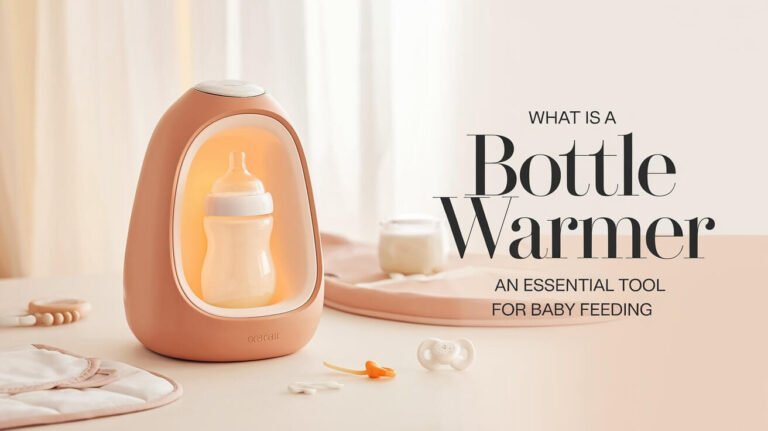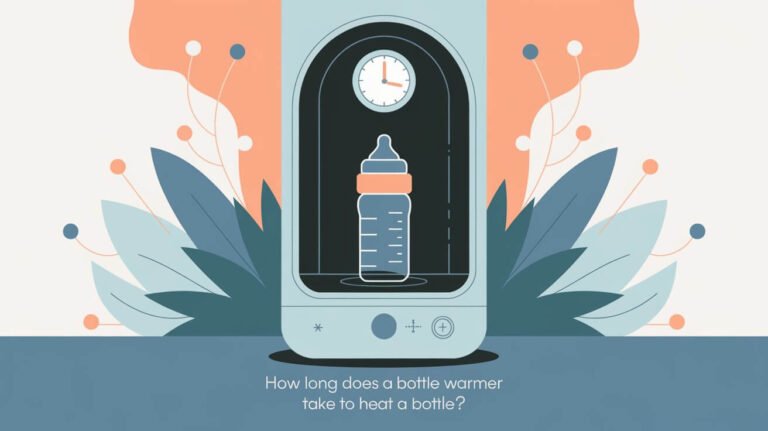How Long Can Bottle Stay in Warmer: Safety Guidelines
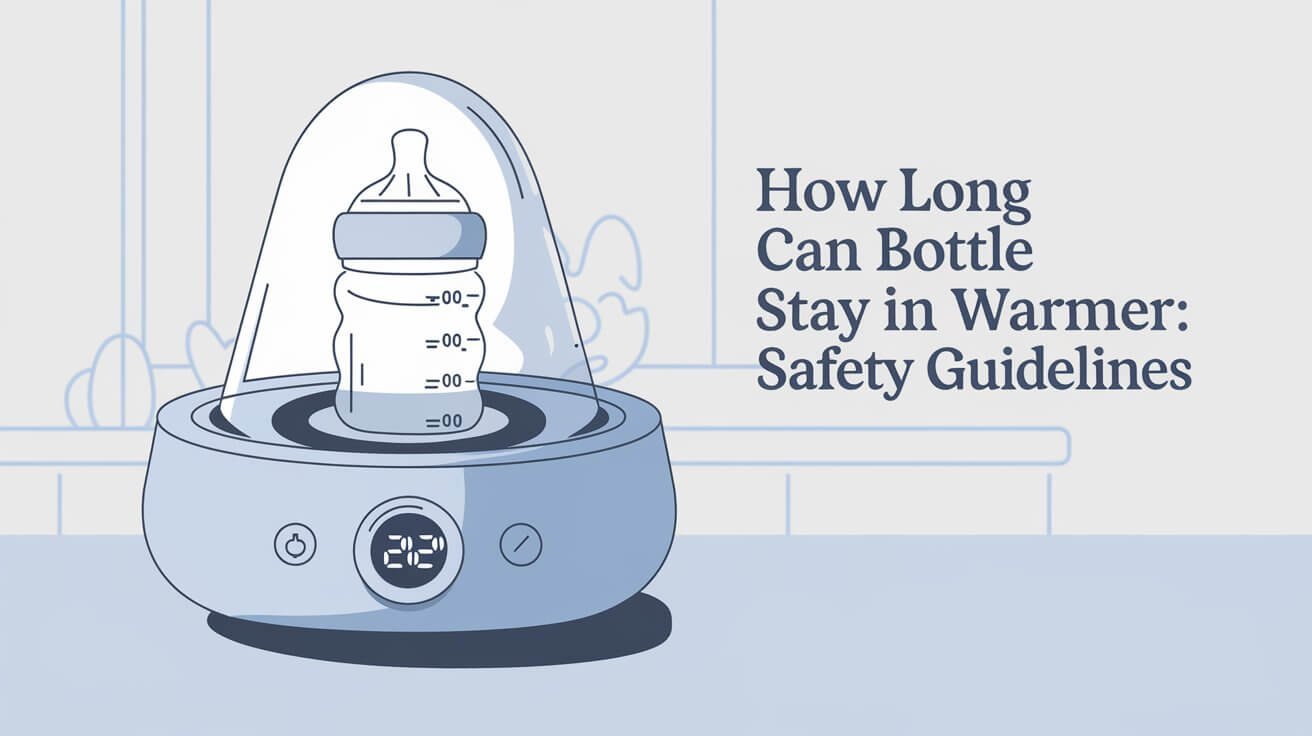
As parents, we often use bottle warmers to keep our babies’ milk or formula just right. But have you ever thought about how long you can leave a bottle in the warmer? The answer might surprise you.
Are you risking your baby’s safety and nutrition by leaving the bottle too long? Learn the key time limits and temperature control tips every parent needs. These will help make sure your baby’s feeding is safe and healthy.
Safe Duration for Bottle Warming
Keeping the right temperature in bottles is key for your baby’s comfort and safety. The best temperature for warming bottles is between 98-104°F (37-40°C). But warming bottles for too long can harm your baby, causing nutrient loss and bacterial growth.
Temperature Control Guidelines
It’s important to follow the maker’s instructions for your bottle warmer. Don’t leave bottles in the warmer for too long, as it can cause burns. Warm bottles for 2-5 minutes, depending on their size and initial temperature.
Risk Factors of Extended Warming
Warming bottles for too long can harm their quality and safety. It can break down important nutrients in breast milk or formula. Also, it can let harmful bacteria grow, risking your baby’s health.
Optimal Warming Timeframes
- Unused breast milk should be thrown away after 48 hours if refrigerated or after three months if frozen.
- Unused frozen breast milk thawed in the fridge should be used within 24 hours.
- Bottles or containers of infant food should not be left in a pot of water for longer than 5 minutes.
- Freshly expressed breast milk (not frozen) that has not been served to a child may remain at room temperature for up to 8 hours.
- 4oz bottles should be warmed at low power for no more than 30 seconds; 8oz bottles should be warmed at low power for no more than 45 seconds.
Following these guidelines helps keep your baby’s milk or formula at the right temperature. It also reduces the risks of overheating.
Types of Bottle Warmers and Their Features
There are many bottle warmers to keep your baby’s bottle warm and ready. Let’s look at the main types: electric bottle warmers, steam bottle warmers, and water bath bottle warmers.
Electric bottle warmers use heat to keep the temperature steady. They’re easy to use and reliable. For example, the Chicco Digital Bottle Warmer & Sterilizer heats a bottle in about 11 minutes to 98°F.
Steam bottle warmers use hot vapor to warm the bottle fast. The Baby Brezza Safe and Smart model warms a bottle in 9.5 minutes on average. But, they need careful watching to avoid too much heat.
Water bath bottle warmers warm the bottle in warm water. The Kiinde Kozii Bottle Warmer warms an 8-ounce plastic bottle in 6 minutes. It also warms an 8-ounce Lansinoh bottle in 8 minutes and 30 seconds, keeping it at about 101°F.
When picking a bottle warmer, think about how fast it heats, how well it controls temperature, and if it works with your bottle. Electric warmers are dependable, steam warmers are quick, and water bath warmers are gentle and even.
How Long Can Bottle Stay in Warmer: Essential Time Limits
Knowing the right time limits for bottle warming is key for your baby’s safety and nutrition. Whether you use an electric, steam, or water bath warmer, watch the warming closely. Take the bottle out as soon as it’s the right temperature.
Electric Warmer Time Limits
Electric bottle warmers should warm for 3 to 5 minutes. This ensures the milk or formula is heated safely and evenly.
Steam Warmer Duration
Steam warmers need less time, about 2 to 3 minutes. Their steam heating is quick and precise.
Water Bath Warming Times
Water bath warmers take a bit longer, 4 to 6 minutes. This is because heat moves slower through water.
It’s vital not to warm for more than 10 minutes. Overheating can harm the milk’s quality and safety for your baby. Always keep an eye on the warming and remove the bottle when it’s ready.
The warming time can change based on the milk’s start temperature and bottle size. Adjust the time to get the best results and keep your baby safe.
Nutrient Preservation During Warming Process
Keeping the nutrients in breast milk is key when warming it for your baby. Too much heat can harm the proteins and antibodies that are so good for your baby. It’s best to warm the milk for less than 5 minutes and not above 104°F (40°C).
Using a water bath to warm the milk is a gentle way to keep its quality. Swirling the milk gently before feeding helps mix the fat. This simple action helps keep the breast milk nutrient retention and warming impact on milk quality high.
- Avoid exposing breast milk to temperatures above 143°F, as this can reduce folate levels by up to 24%.
- Heating bottles to 120°F can cause a notable deterioration in the quality of breast milk.
- Freshly pumped milk can be kept at room temperature for 6-8 hours, but warmed milk should be consumed within 2 hours to prevent bacterial growth.
By following these tips and using gentle warming, you can make sure your baby gets the most nutrients from your milk. Even after warming, your baby will get the best from your breast milk.
Signs of Overheated Bottles
As a responsible parent, knowing the signs of an overheated bottle is key. A bottle left in a warmer too long can harm the milk or formula’s quality. It also risks your baby’s safety.
Physical Indicators
A bottle that feels too warm or hot to touch is a sign. Steam rising from the milk also means it’s too hot.
Quality Changes
Look for curdling, separation, or an odd smell in the milk or formula. These changes show the nutrients and quality have been affected.
Safety Concerns
Scalding is a big risk with an overheated bottle. It can burn your baby’s mouth and throat. High temperatures also damage nutrients, reducing their health benefits.
To keep your baby safe, always check the bottle’s temperature on your wrist. If it’s too hot, throw it away and make a new one. This way, you avoid the dangers of overheated bottles.
Temperature Testing Methods
Ensuring your baby’s bottle is at the right temperature is key for safe feeding. The milk temperature check and safe feeding temperature are very important.
The wrist test is a simple way to check the temperature. Just put a few drops of formula or breastmilk on your wrist. It should feel warm, but not too hot. This gives a good idea of the temperature.
- For a more exact measurement, use a thermometer. The best temperature is between 98-104°F (37-40°C).
- Another way is to feel the outer surface of the bottle. It should be warm, but not too hot to the touch.
Don’t taste the milk to check its temperature. This can add bacteria and make the feed unsafe. Instead, swirl the milk gently before checking its temperature. This helps the heat spread evenly.
“The ideal temperature for formula or breast milk is at or just below body temperature, approximately 98.6 degrees Fahrenheit.”
By using these easy temperature testing methods, you can make sure your baby’s bottle is at the safe feeding temperature. This ensures a comfortable and nourishing feeding time for your baby.
Storage Guidelines After Warming
Storing warmed breast milk right is key to keeping it safe and good quality. After warming a bottle or container, follow certain steps. This ensures your baby gets the best nutrition.
Refrigeration Requirements
Freshly warmed breast milk can stay at room temperature for up to 4 hours. But, it’s best to put it in the fridge right away if you won’t use it all. Milk stored in the fridge should be used within 24 hours.
Don’t reheat breast milk that’s already been warmed. This can harm the nutrients and increase bacteria risk.
Rewarming Protocols
- To rewarm refrigerated milk, gently place the container in warm water or use a bottle warmer.
- Never microwave breast milk. It can burn your baby’s mouth with hot spots.
- Throw away any milk left at room temperature for more than 2 hours after warming.
- Use the “first in, first out” rule for storing warmed warmed milk storage in the fridge. This keeps it fresh and safe.
By sticking to these reheating breast milk safety tips, you keep your breast milk’s nutrients and quality. This ensures your baby gets the nourishment they need.
Common Mistakes to Avoid
Warming bottles right is key for keeping milk’s nutrients and keeping your baby safe. Many parents make mistakes that can harm the milk’s quality and safety. Knowing these errors helps you use safe warming practices and steer clear of bottle warming errors.
Microwaving breast milk is a big no-no. Microwaves can heat unevenly, damaging the milk’s nutrients. Use a bottle warmer or warm water in a bowl instead.
- Never leave a bottle unattended in a warmer, as it can easily overheat the milk.
- Avoid refreezing thawed breast milk, as this can further degrade the quality and safety of the milk.
- Steer clear of using boiling water for warming, as it can reach temperatures well above the recommended limit of 104°F (40°C) for optimal breast milk preservation.
- Don’t heat milk directly on the stove, as this can also lead to uneven heating and nutrient loss.
- Remember that not all bottle warmers have the same heating times, so always check the manufacturer’s instructions and test the temperature before serving.
Always check the milk’s temperature before feeding your baby. This makes sure the milk is safe and comfy for your little one. It also prevents burns or discomfort.
Closing Thoughts
Following the right guidelines is key for warming bottles safely and keeping the milk or formula nutritious. Use the correct warming time, usually 2-5 minutes. Pick a bottle warmer that fits your needs.
Make sure to check the milk’s temperature before feeding. This ensures it’s not too hot. Cleaning and keeping your bottle warmer in good shape is also important. This helps avoid bacteria and keeps the warmer working well.
By following these bottle warming best practices and safe infant feeding guidelines, you can nourish your baby. This also keeps them healthy and safe.
Success in bottle warming comes from finding the right balance between speed and safety. With some care and attention, you can warm bottles well. This way, you can give your baby the best care.

